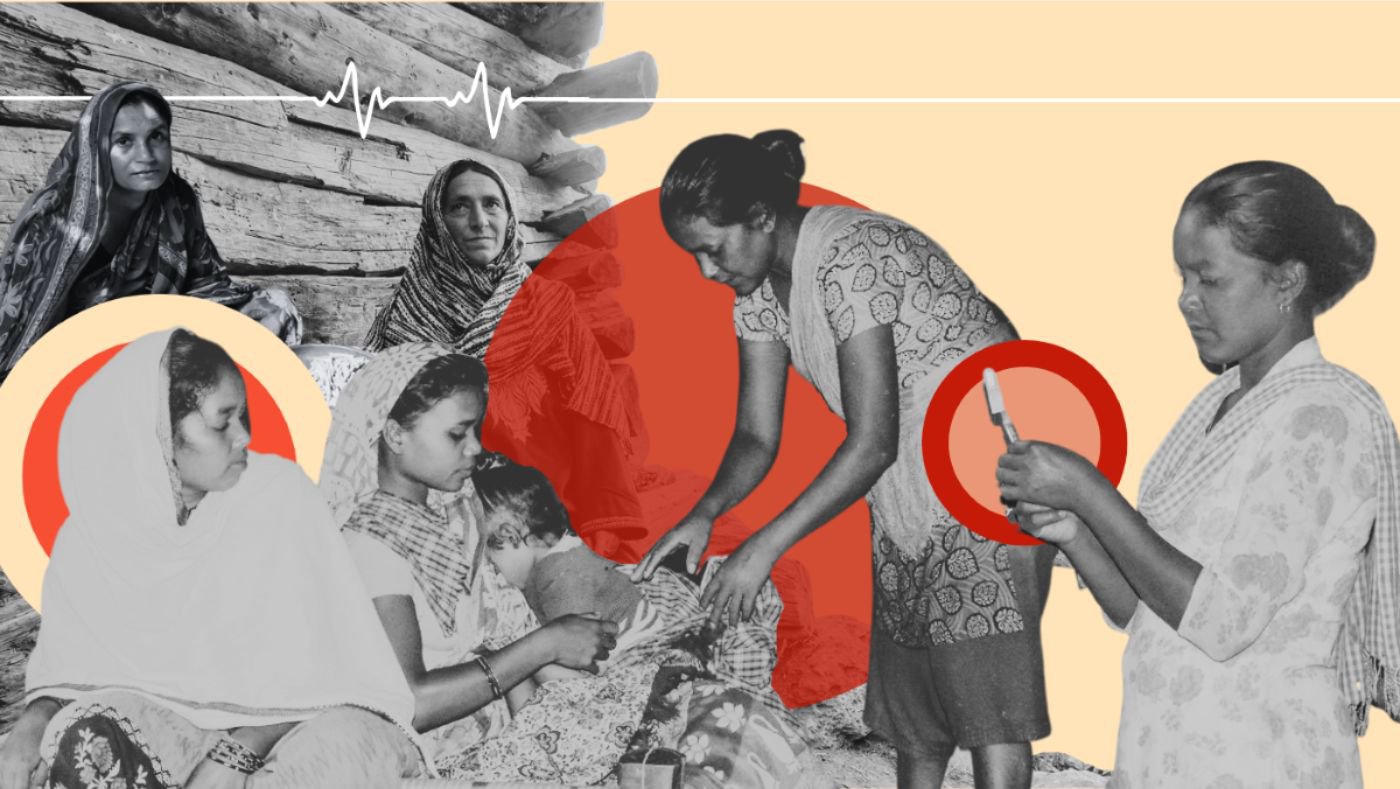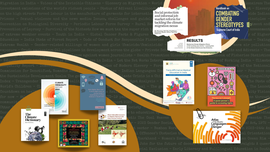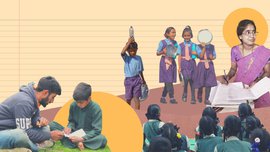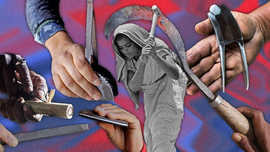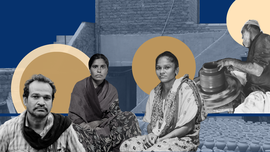In Borotika, Jharkhand, a woman experiencing a complicated pregnancy may end up having to cross the border into Odisha just to see a doctor.
She is not alone – if you are a woman living in rural India, the chances of seeing a gynaecologist or even a surgeon are particularly bleak. Community Health Centres (CHCs) here have a shortfall of 74.2 per cent in obstetricians and gynaecologists required in the existing infrastructure.
If you are a young mother with a sick child, accessing a paediatrician in a CHC may take a while as roughly 80 per cent of the required posts for them as well as for physicians are yet to be filled.
We know all this and more from the Rural Health Statistics 2021-22 . These and other important reports, research papers and hard data, laws and conventions are available in the PARI Health Archive and serve as crucial vantage points to illustrate and better understand the state of women’s health in India.
This section spotlights the precarious nature of women’s health, especially in rural India. From reproductive health to sexual violence, mental health to the impact of the Covid-19 pandemic, the PARI Health Archive covers several aspects of women’s health – bolstering PARI’s mandate of covering ‘the everyday lives of everyday people’.
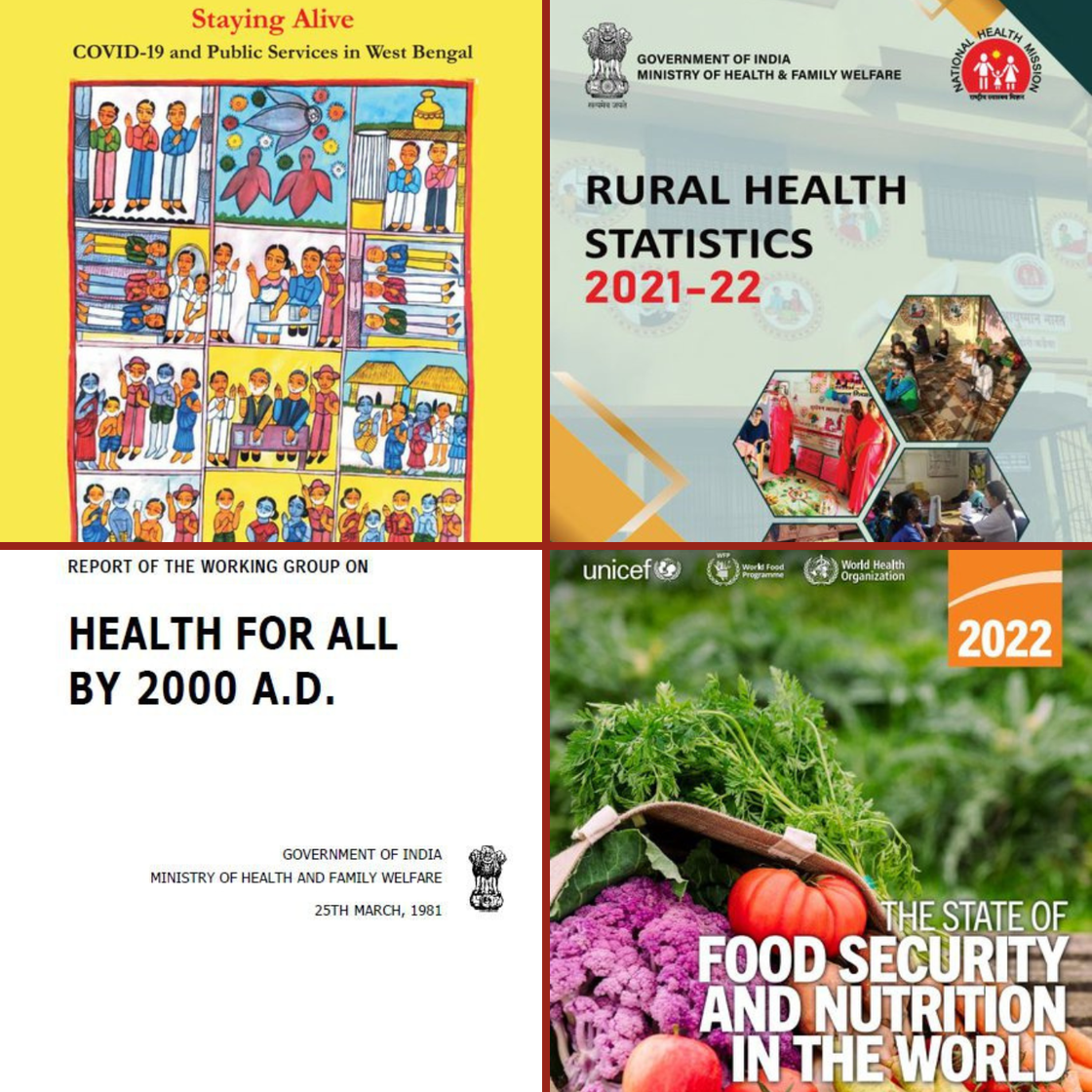
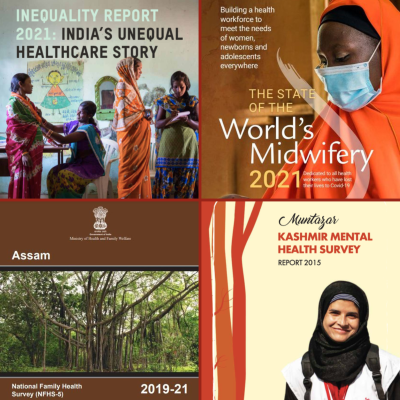
The PARI Health Archive, a subsection of the
PARI Library
, houses 256 documents, including reports by the government, independent organisations, and UN agencies. The focus ranges from global to national issues, or themes from specific regions of the country.
“He told me I had a calcium and
iron problem
[deficiency] and I should never sit on the floor,” says Tanuja, a
beedi
worker in Murshidabad district of West Bengal.
“We still have Adivasi women who come with practically no blood – 2 grams per decilitre of haemoglobin! It could be lower, but we can’t measure that,” says Dr. Shylaja at the Adivasi hospital in the Nilgiris.
Across the country, anaemia among women has worsened since 2015-16, according to the latest National Family Health Survey ( NFHS-5 2019-21 ). This survey provides information on population, health and nutrition in 28 states, eight union territories, and 707 districts of India.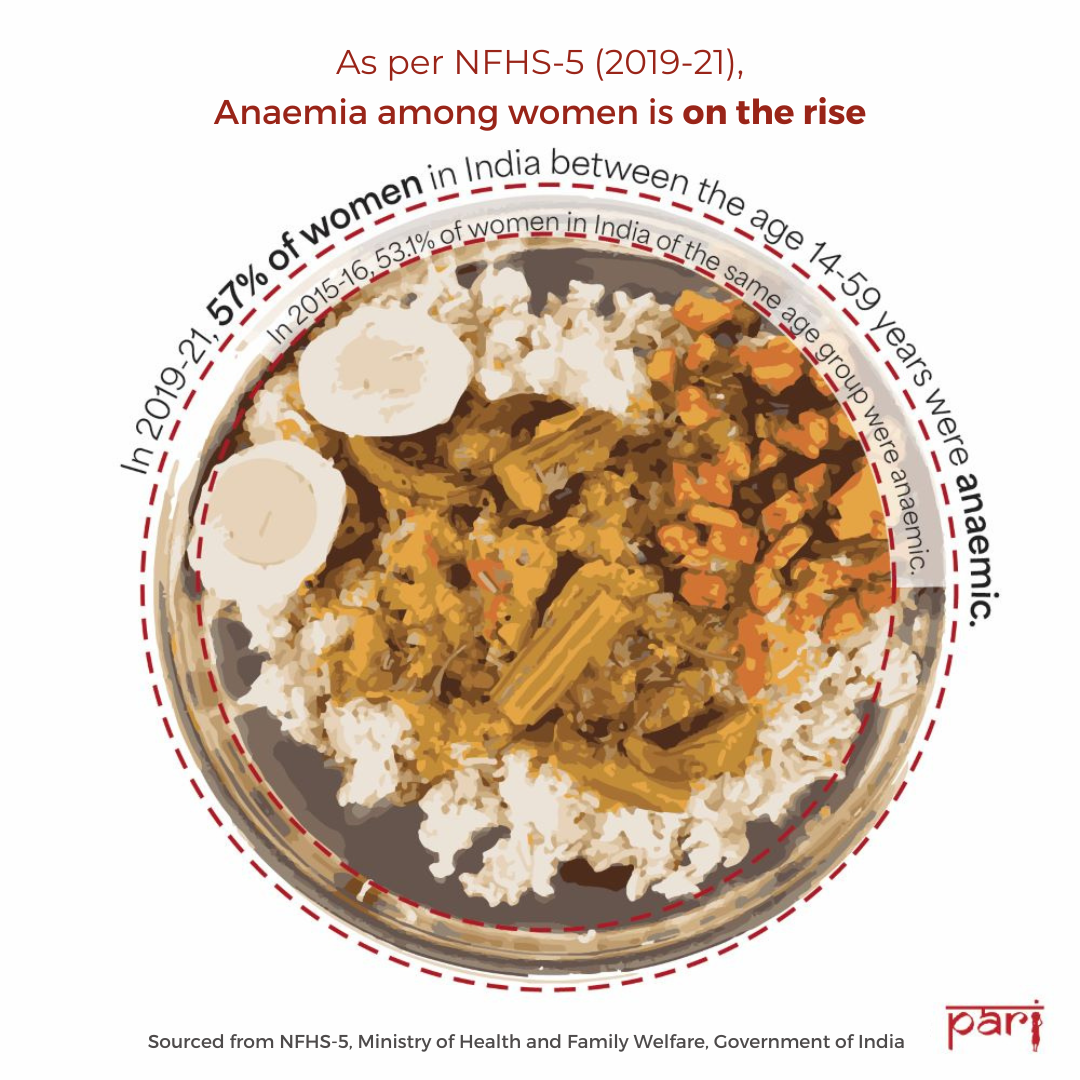
“I had
excessive loss of blood
during my delivery. Even before childbirth, the nurse had said that I had a bad
khoon ki kami
[severe anaemia] and need to eat fruits and vegetables, ” says Anjani Yadav in Bihar’s Gaya district.
Among Indian women aged 15-49 years, 57 per cent were anaemic in 2019-21. Nearly one in three women across the globe suffers from anaemia. As per The State of Food Security and Nutrition in the World 2022 , released by the Food and Agriculture Organization, United Nations, “anaemia affects more women in rural settings, in poorer households and who have received no formal education”.
Such deficiencies are worsened with the unaffordability of nutritious meals. The 2020 Global Nutrition Report states that the high cost of several nutrient-dense foods (like eggs and milk) is a major barrier in tackling malnutrition. With a healthy diet costing 2.97 US dollars or around Rs. 243 in India as of 2020, as high as 973.3 million people in India cannot afford a healthy diet. Unsurprising, women rank low on the scale for resource allocation – in their homes and beyond.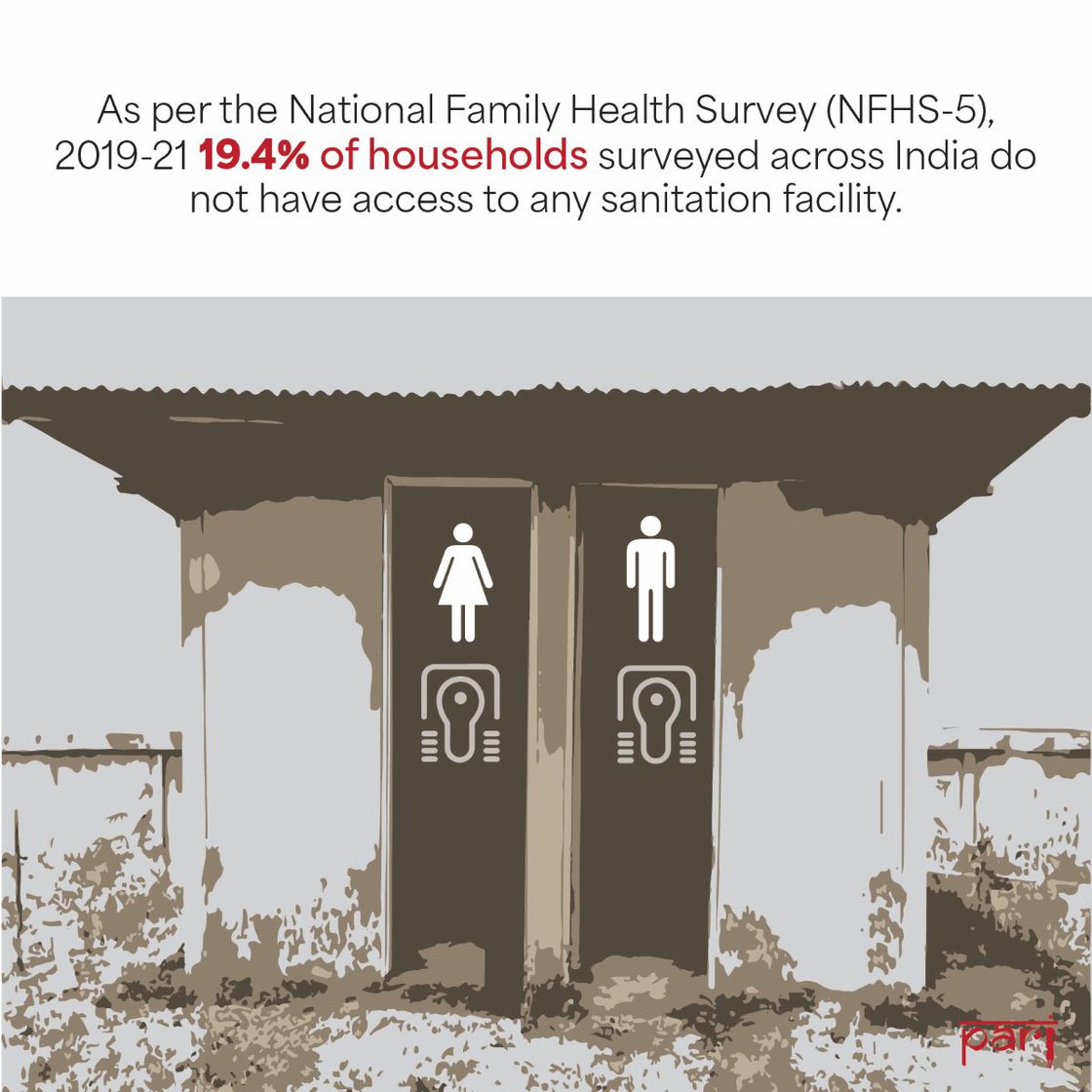
The PARI Library includes all-India surveys on the prevailing healthcare infrastructure. With close to
20 per cent
of households across India having no access to any sanitation facilities, “At night, the
only toilet available
is the railway tracks,” say girls in Patna's slums.
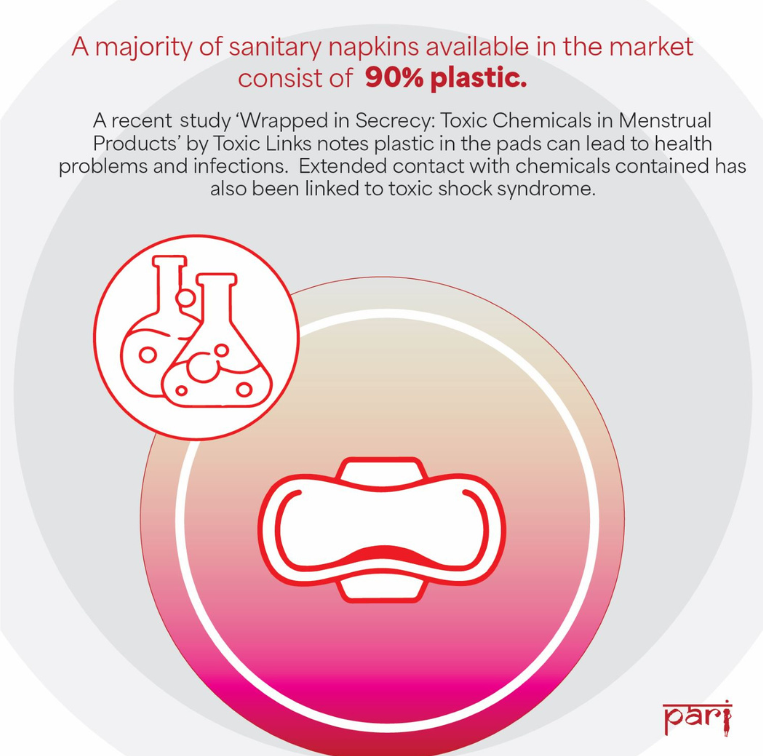
The Indian Women’s Health Charter
upholds women’s rights to make decisions concerning their reproductive health “free of discrimination, coercion and violence”. Access to affordable healthcare facilities is imperative to the fulfilment of these rights. As per the National Family Health Survey-5 (2019-21), about 80 per cent of women who underwent a procedure of female sterilisation did so in a public healthcare facility, usually a municipal hospital or a Community Health Centre. Yet, the country witnesses a glaring lack of such institutions.
The nearest primary health centre (PHC) for the residents of Wazirithal village in Jammu and Kashmir is five kilometres away.
It is also understaffed and ill-equipped. The Badugam PHC in Bandipore district, Kashmir, has only one nurse. “Whether it’s an emergency, an abortion, or a miscarriage, they all have to go straight to Gurez,” Raja Begum, an anganwadi worker in Wazirithal, told PARI. “And if there is an operation involved, they must go to Lal Ded Hospital in Srinagar. That is about 125 kilometres away from Gurez and may take nine hours to reach in difficult weather,” she added.
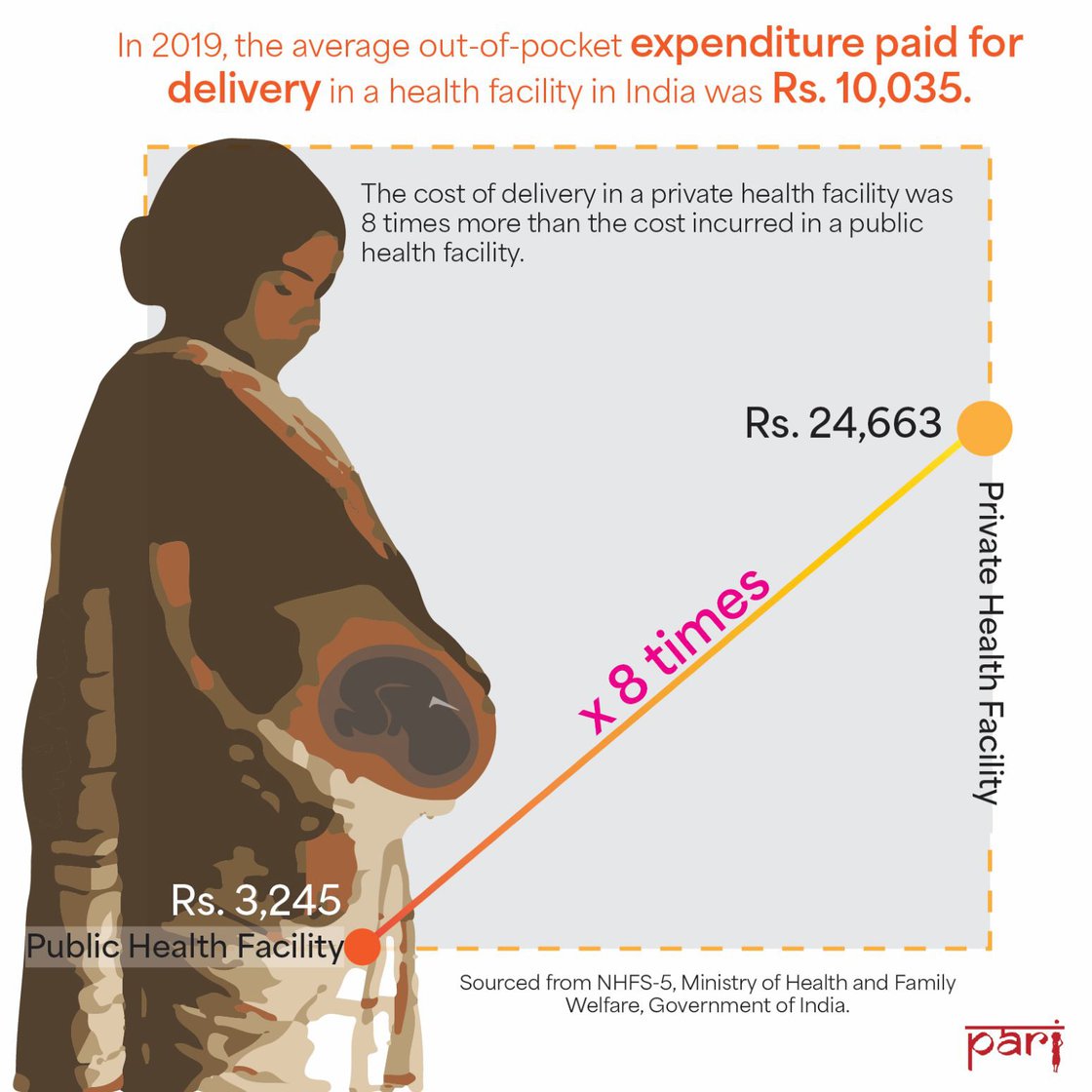
The Rural Health Statistics 2021-22 notes that as high as 34,541 posts for auxiliary nurse midwives in sub centres and primary health centres were vacant as on March 31, 2022. A stark figure considering that women were more likely to approach accredited social health activists (ASHAs), auxiliary nurse midwives (ANMs) and anganwadi workers for their health needs.
As per Oxfam India’s Inequality Report 2021: India’s Unequal Healthcare Story , the country has about one government-employed allopathic doctor for every 10,189 people and one state-run hospital for every 90,343 people.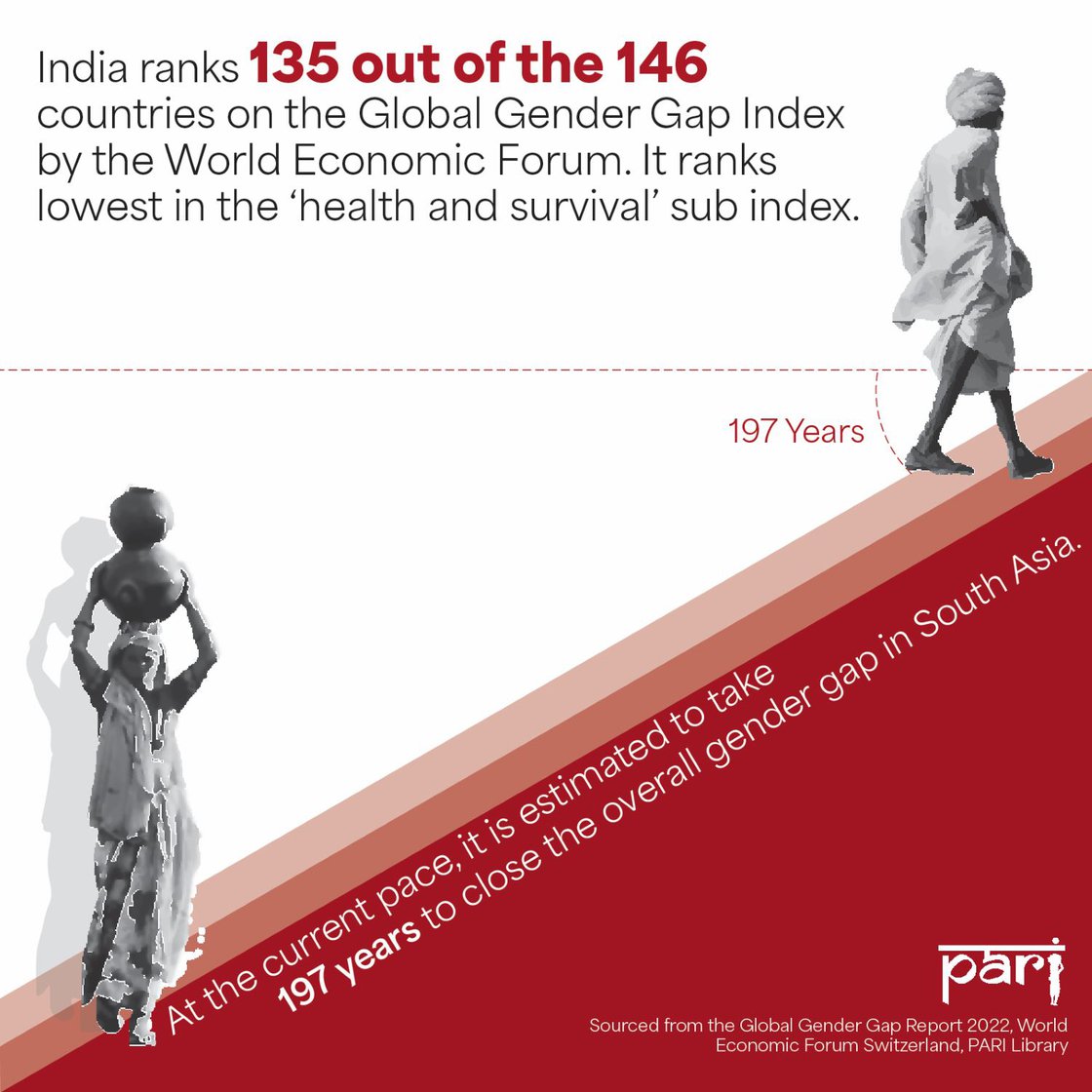
The need and demand for health services in India far outstrips the present infrastructure. The Global Gender Gap Report , which marks countries on the state of gender parity, ranked India 135 out of 146 countries in 2022. The country was also ranked lowest in the index for ‘health and survival’. In the face of such gaping structural lacks, it becomes crucial to better understand the state of healthcare in the country and its impact on the lives of women.
The PARI Library is a means to this end.
We would like to thank PARI Library volunteer Aashna Daga for designing the graphics.
Cover design: Swadesha Sharma
